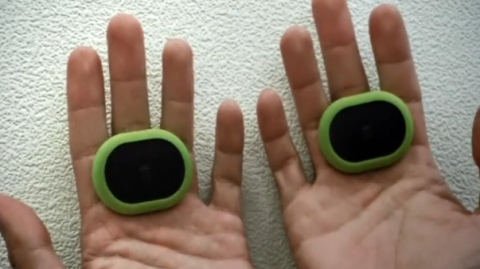
Reuters — Fitness trackers remained big business at this year’s IFA consumer technology fair in Berlin, with major players like Fitbit and Garmin announcing new devices. However, waterproof fitness trackers for swimmers are often limited to data gathering, such as stroke rate per minute or distance swam.
Hong Kong-based start-up Platysens is hoping to make a bigger splash with its ring-style swim analyser. Instead of a typical wrist-worn device, their ‘Seal’ prototype comprises two ‘rings’ worn on the middle finger of each hand. Force and motion sensors collect data on the hands’ movement as they push through the water. as well as the force exerted into the water.
“We have two sensors in it, one is the force sensor, we actually measure the force as the swimmer pushes through the water, and the other one is a motion sensor. The motion sensor is actually a combination of accelerometer, gyroscope and magnetic sensor,” Platysens founder Wong Cheong Yui told Reuters in Berlin.
The two rings are wirelessly synchronised to measure left-right hand symmetry with each stroke through the water, so swimmers can tell if one hand is weaker than the other, for example.
“It basically helps to analyse your stroke, where the pro swimmer wears it like a ring on his hand,” added Wong Cheong Yui.
“Then when he swims the sensor actually measures the force as they push through the water. Also we can record the motion of his hand. So after he swims, it uploads all the data to a mobile app and then we can show how was his stroke.”
Patent-pending algorithms calculate the hands’ moving path through the water, with all the data relayed via Bluetooth to the smart phone app, which could help coaches use it as a training tool.
Still at the prototype stage, the Seal rings’ final design is currently being perfected. For professional swimmers, drag can be the difference between winning or losing a race, so getting the rings as streamlined as possible is vital.
“One of the problems is mounting the sensor into the hand. Right now, we are still developing this one but we found this approach is the most practical one,” said Wong Cheong Yui.
“And because it creates a little bit of drag we are actually working on the next version to make it thinner so the swimmer doesn’t feel it that much at all.”







